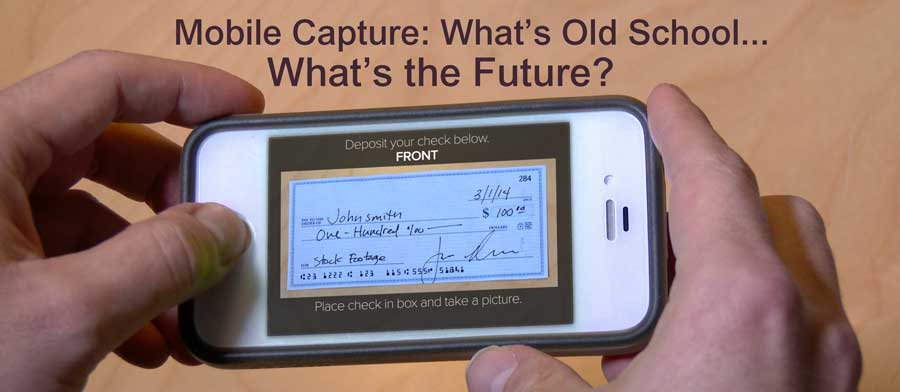Today, mobile phones are replacing the traditional technology workflow in document capture and processing. Although traditional document processing—involving scanning documents to digital images, and applying OCR technology to transform letters and words into meaningful contextual data—remains a large business, trends indicate that mobile capture technology will one day replace traditional document processing.
Major Paradigm Shift
This transition has three main drivers:
- Cost Reduction. Companies can replace outdated scanners and expensive hardware with a mobile device that can remove the cost-prohibitive barriers and complications of upgrades, license renewals, etc. Simply download an app to your phone and start scanning your documents.
- Ease of Use. Companies spend numerous resources to train document prep staff, and learning complex scanning technology can be daunting for many employees. The ubiquity and ease of mobile phones eliminates much of the complexity and allows users to simply “point-and-capture” without the usual hassle.
- Extend Market Reach. businesses can extend their market reach by providing new and innovative services to their customers with mobile-enhanced solutions.
For example, companies in all industries are phasing in mobile capture technology to help with customer onboarding and many other types of customer interactions. Insurance claims adjusters use mobile capture at the scene of an accident, or later on in the workflow as the paperwork starts to pile up. Busy employees with stacks of paper documents achieve better and more efficient workflows leveraging mobile capture technology while still complying with established business standards.
We’ve already seen an influx of mobile capture apps in several different areas:
- Simplifying the transformation of business card leads straight into CRM systems, like Camcard or Evernote
- Increasing the speed and accuracy of remote check deposit in banking (most major banking institutions have this capability), and
- Creating and submitting accurate expense reports, eliminating the need for copying or taping paper receipts (like Concur or Expensify).
Near Future for Mobile Capture
Now other fields, traditionally known for their sheer volume of paper such as loan process automation, insurance and healthcare are also benefiting from mobile capture. Loan processors (auto and mortgage) instantly capture forms and documents to facilitate processing. A lender may call or text a potential borrower asking for a paper document—a W2 tax form, a pay stub, bank statement, or a copy of a driver’s license—which the borrower can deliver much quicker than scanning and emailing. The mobile capture solution has its limits; it lends itself well to shorter documents (like the ones listed above) rather than lengthy documents, such as tax returns.
Insurance adjusters can use a smart phone or tablet as a sophisticated scanning device which not only captures a document, but also cleanses it and extracts critical data. With this capability, field reps or customers themselves can capture documents, photos and data for claims, to initiate critical business processes at the earliest point in the process.
In healthcare, the charge capture process is the capture of information for use in a medical claim document, which is a critical element of the overall revenue cycle. Without a reliable charge capture process, coding errors and lost charges can cost healthcare organizations a lot of money. Physicians would much rather spend their time with patients rather than filling out paperwork. Wouldn’t anyone?
Trend Toward Mobile Capture Solutions
The continuing trend toward mobile capture solutions opens new opportunities for document capture companies and BPOs to provide their value-added services. Many new SaaS companies need help with automating the extraction of meaningful, contextual data from images and documents, and may look to data capture experts for this. In the future as the technology matures, we should see improvements in cloud-based apps for image manipulation and data capture, possibly even crowd-sourced apps for data verification and validation.
At Parascript, we’re primarily interested in taking and processing an image of a document regardless of how it was captured, and ideally, without the need for any specialized mobile app. This way, more organizations can make use of mobile capture with less costs and complexity.
If this article interested you, you also might find the latest video with an overview on Parascript On-Demand useful:




